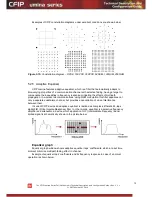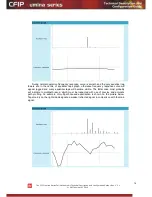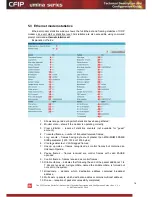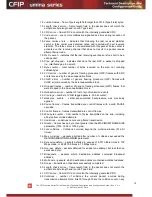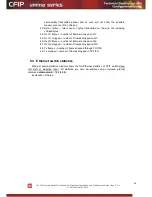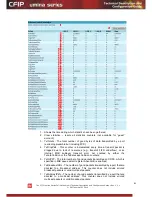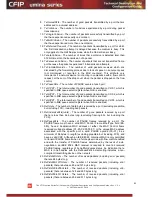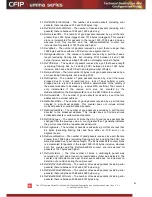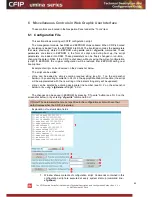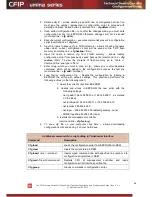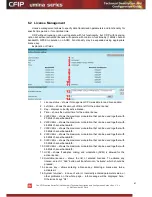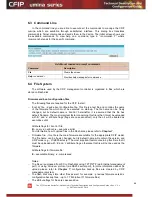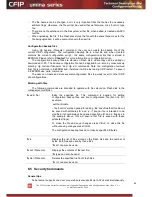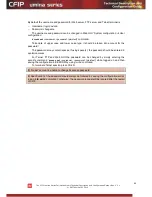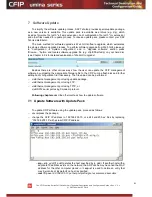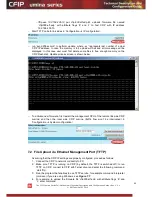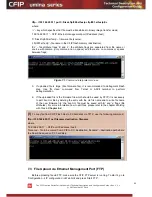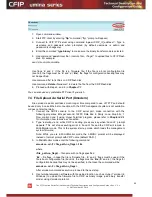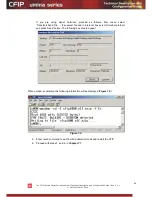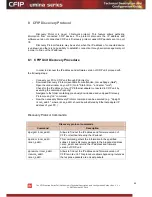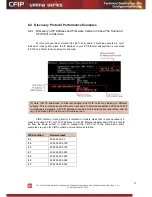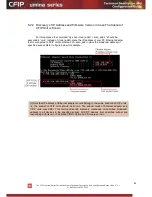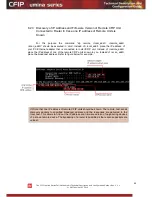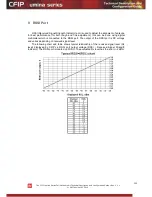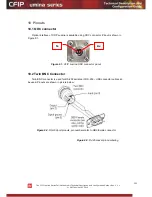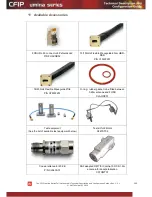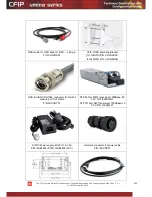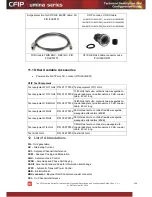
The CFIP Lumina Series Full Outdoor Unit Technical Description and Configuration Guide
•
Rev. 1.3
•
© SAF Tehnika JSC 2010
89
–
The file names can be changed, but it is very important that the file has the necessary
attribute flags; otherwise, the file will not be used either as fi
rmware, or as „boot.ini‟ type
file.
–
There are no file extensions in the file system; either file, when edited, is treated as ASCII
text file.
–
When uploading the file, if the Flash disk stores the file with the same filename as for the
file being uploaded, it will be overwritten with the new file.
Configuration backup files
Using „
cfg backup <filename>
‟ command, the user can create the backup file of the
current CFIP configuration. The configuration backup file is a text file and, when created,
contains the current configuration script, - the same configuration script that is stored in
EEPROM. Please refer to
Chapter 7
for more information on configuration script.
The configuration backup files are stored on Flash disk, where they can be edited or
downloaded to PC. The backup configuration file can be applied in run-time, by consecutively
entering „
cfg restore <filename>
‟ and „
cfg run
‟ commands. Note: the configuration restored
from file is not stored in EEPROM and, therefore it will be lost during CFIP restart. To save it
in EEPROM use
„write‟
command.
The user can create and store several configuration files to quickly revert to other CFIP
site configurations.
Working with files
The following commands are intended to operate with files stored on Flash disk in the
management controller.
tfs edit <file>
Edits the specified file. This command is applied for editing
configuration backup files and boot configuration file (boot.ini). For
example,
edit boot.ini,Be
– file „boot.ini‟ will be opened for editing. „Be‟ specifies that this file will
be saved with attributes „B‟ and „e‟. If boot.ini file is intended to be
modified, it should always be opened specifying „B‟ and „e‟ flags as in
the example above, this will ensure that file is saved with these
attributes (flags).
To close the file and save changes press Ctrl+Z, to close the file
without saving changes press Ctrl+Q.
The configuration backup files do not require specific attributes.
tfs ls
Displays the list of files stored on the Flash disk and the number of
bytes, both free and used by these files.
„tfs dir‟ can also be used.
tfs cat <filename>
Displays the contents of the text file.
„tfs type‟ can also be used.
tfs del <filename>
Deletes the specified file from Flash disk.
„tfs rm‟ can also be used.
6.5 Security Commands
General tips
Telnet server supports one user only, web server supports up to 32 users simultaneously.

